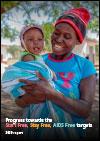Publications on Children
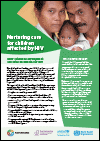
Over the last three decades, scientific findings from a range of disciplines have converged. They prove that in the early years, we lay down critical elements for health, well-being and productivity, which last throughout childhood, adolescence and adulthood. Failure to meet a child’s needs during this critical period limits the child’s ability to achieve their full developmental potential and threatens the future of human capital and society in general.

This policy brief is for country-level programme managers, technical advisers and procurement bodies involved in the process of procuring, introducing and scaling up optimal antiretroviral therapy for infants and young children living with HIV in low and middle-income countries. With multiple new antiretroviral drug options and the availability of new evidence, antiretroviral therapy for children is a dynamic and rapidly evolving space.
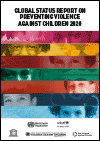
The Global status report on preventing violence against children 2020 charts countries’ progress towards the SDGs aimed at ending violence against children. Jointly published by WHO, UNICEF, UNESCO, the UN Secretary-General’s Special Representative on Violence against Children, and the Global Partnership to End Violence against Children, it collates inputs from over 1000 decision-makers in 155 countries who assessed their violence prevention status against the evidence-based approaches set out in INSPIRE: Seven strategies for ending violence against children.
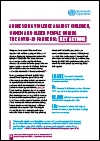
Several countries affected by COVID-19, have seen increases in levels of violence occurring in the home, including violence against children, intimate partner violence and violence against older people. Countries also face increasing challenges in maintaining support and care for survivors of violence. This brief compiles key actions that the health sector can undertake within a multisectoral response to prevent or mitigate interpersonal violence based on existing WHO guidance.
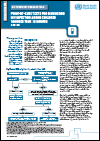
Despite long-standing WHO recommendations and significant investments in building testing capacity, in 2018 only 59% of HIV-exposed infants received a virological test for HIV by 2 months of age, and testing coverage is even lower at later time points for children who are still breastfeeding. Unfortunately, however, 50% of perinatally infected infants and 25% of infants and children infected during breastfeeding will die before 2 years of age without ART.

This advocacy brief presents data and analysis on education funding from 42 countries and highlights major disparities in the distribution of public education funding. The brief notes that the lack of resources available for the poorest children is exacerbating a crippling learning crisis, as schools fail to provide quality education for their students. It calls on governments and key stakeholders to urgently address equity in education funding and presents specific actions required to achieve equitable quality education for every child.
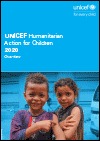
This edition of UNICEF’s annual humanitarian funding appeal presents information about ongoing conflicts and disasters affecting millions of children and young people around the world – as well as achievements made by UNICEF and partners in response to these emergencies, and urgent humanitarian needs that remain unmet as 2020 begins. As the overview demonstrates, UNICEF continues working to reach the most vulnerable children and families with the life-saving support they need during and after emergencies.

The analysis presented in this report demonstrates that while girls' lives are better today than they were 25 years ago, the gains are uneven across all regions. The report calls on global, national and regional stakeholders to expand opportunities for girls and young women to be the changemakers and designers of the solutions to their challenges and opportunities; invest in the skills development of adolescent girls so they can compete in today's labour market; improve girls' health and nutrition; and end violence in all its forms against them.
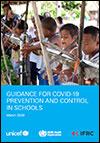
The purpose of this document is to provide clear and actionable guidance for safe operations through the prevention, early detection and control of COVID-19 in schools and other educational facilities. The guidance, while specific to countries that have already confirmed the transmission of COVID-19, is relevant in all other contexts. Education can encourage students to become advocates for disease prevention and control at home, in school and in their community by talking to others about how to prevent the spread of viruses.






